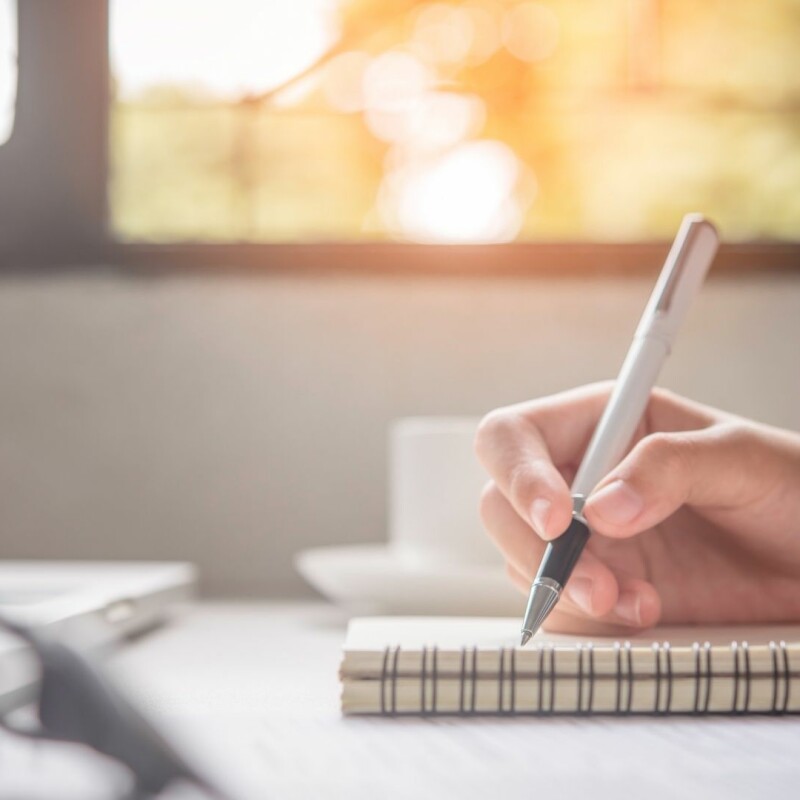All Things Admin Joins ASAP. Learn More ›
Effective Note-Taking Tips for Government Office Managers
April 16, 2024

Office managers in government settings must be able to swiftly locate and disseminate important information to their coworkers. Often grants, reports, contracts, and agreements must be compiled, shared, and filed under a short deadline, which means meticulous note-taking and organization are essential.
Let’s delve into several effective note-taking strategies and tools that you can use to keep your office’s communications systematized, clear, and agile.
Choosing Between Handwritten and Digital Note-Taking
While there are pros and cons to both note-taking methods, it ultimately depends on the situation and your personal preference when deciding between handwritten and digital notes.
Using a laptop may not always be practical when you need to take notes in a secure setting like a courthouse. Conversely, handwriting notes may not be ideal during internal meetings with multiple participants, especially when running a slideshow and needing to capture everyone’s input.
It’s important to be familiar with best practices for both options so you can be prepared for any situation.
Pen and Paper Note-Taking Tips
If you’re writing notes by hand, consider these strategies:
Choose a notebook large enough for you to write legibly
Bring a backup pen or pencil
Write in complete thoughts, not complete sentences
Use shorthand or symbols to save time
Include the date, attendees, and meeting title at the top of your paper
Review your notes after the meeting and add additional details, highlight important points, and summarize the takeaways
Store handwritten notes in a locked file cabinet to keep confidential information secure
Consider transferring your handwritten notes to a password-protected digital platform to keep yourself organized
Now, let’s take a look at digital note-taking tools and methods that can streamline your government office’s communications.
Digital Note-Taking Tools
Security is a top priority when it comes to choosing a digital tool for notes. Check with your office’s compliance regulations first, then select a tool that meets your company’s standards.
These are three popular applications for safe note-taking:
Microsoft OneNote, which includes encryption and password protection features
Evernote offers encryption and secure sync options
Turtl boasts end-to-end encryption and zero-knowledge architecture for robust security
Try these six digital note-taking strategies
Choose an organizational structure before the meeting
Decide if you want to use bullet points, headings and subheadings, a chart, symbols, different colors, diagrams, or a combination of these. Create the structure in your note-taking tool before the meeting so you can easily fill it in.
Tip: Create a few note-taking templates so you can duplicate them when needed!Use a templatized file naming system
Keep your notes organized by implementing a consistent naming structure. For instance: Notes_Meeting Name_Department_Date
Example: Notes_Weekly Touch Point_Health Department_06.15.2024Focus on the most important points
Don’t try to type every word. Instead, practice summarizing what you hear into short, concise notes.Record meetings
Capture meetings using video-conferencing apps or audio recording tools whenever possible. This is particularly beneficial for complex meetings or topics, allowing you to revisit specific sections and details for note-taking accuracy. Remember to always let other participants know you’ll be recording the meeting before hitting “start.”Review your notes
As soon as you can, go back and read over your notes to be sure you captured all the information. Take this time to add summaries, attach visuals, and re-organize your notes as needed. If you need clarification on any points, now is a good time to ask for it.Hit “save” before exiting the tool
Many apps automatically save your notes as you type, but it’s better to hit “save” before closing or exiting the program on the off chance your tool glitches and you lose your work!
Watch our video about enhancing organization and workflow with Microsoft OneNote.
Join the Conversation
Welcome to the ASAP Circle, a community platform for peer-to-peer conversation on trending topics, professional challenges, and shared experiences. We even have designated spaces for weekly Tuesday Coffee Breaks.










